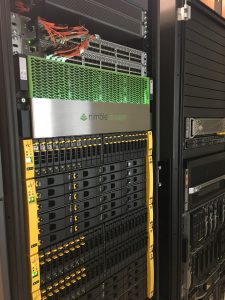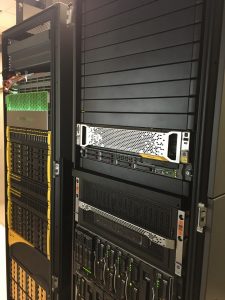Over the past decade, we have seen Microsoft evolve from the company that makes Windows to one of the top three tech giants, and the second largest cloud services provider behind only Amazon. While Microsoft has been a giant in the industry since the 80’s and 90’s, market share for their Windows operating system has been steadily declining during the rise of mobile devices.
Android and Apple have been slowly taking over the market and edging Microsoft out after a long string of flops. From Groove music, to the Windows phone, Microsoft has been releasing a series of not so great products that get overshadowed by others, and eventually phased out. There is one space they have been excelling in, cloud.
Focusing on the Cloud
With the success of Office 365 and Azure, it’s no surprise that Microsoft is shifting their focus to the cloud. It’s also no surprise that they are shifting the focus of their flagship product to be more in line with their current successes. There have been some major shakeups within the company over the last few years, one of which is to move the Windows operating system operations to the cloud division. Another act that solidifies Microsoft’s intent to bring Windows to the cloud.
Windows Virtual Desktop
Enter Windows Virtual Desktop. The newest iteration of Windows 10 is offered as a remote virtual desktop run in Azure and is accessible from anywhere. Just like every other cloud product MS offers, this means it will always be up to date. No more Windows updates restarting your computer at the most inconvenient times.
The biggest upside of Windows Virtual Desktop will definitely be its impact on IT departments. The fully virtualized OS will bring a lot of benefits with it that were previously only realized through server-based virtualization, which is costly and complicated.
Benefits of Windows Virtual Desktop
- Virtual Desktops will be able to share resources with other Virtual desktops
- Centrally managed through Azure
- Accessible from anywhere, eliminating a lot of networking headaches
- IT departments will be able to deploy new desktops easily and quickly while hardly needing to touch any actual hardware, making it scalable to meet the needs of any company.
- Built in Security and Compliance. Taking a load off any monitoring and protection software
The new virtual desktop will be bundled with Office 365, which will cut costs and ensure companies have everything they need to run in the cloud. The operating system runs on a pay-as-you-go model that Microsoft uses with most of its products.
There are several tiers of this model. Starting with the standard pay-as-you-go, where you can increase compute capacity and storage to fit your needs. You only pay for the virtual machines while they are on. There is also the option to reserve VM instances, which is a fixed price for the VM’s whether they are running or not. While still flexible, this requires a commitment for a length of time.
Redefining the Operating System
In an age of mobile devices, Microsoft is trying to redefine the operating system. They are taking it from a single-device system, to a multi device one. This will allow you to access the same desktop from any device, making it truly mobile.
Though it’s clear that Microsoft has been focusing on other projects, they aren’t leaving Windows by the wayside. The Windows Virtual Desktop may be more suited for business use, but it is a pretty clear indicator of where they want to OS to be in the future. There have been rumors that the next version of Windows will be the last. A single version of Windows that will continue to evolve, but you won’t need to upgrade to the next iteration.
Microsoft isn’t afraid to admit it’s made a few missteps in the last decade, like Windows 8 or the Windows phone. They know where they excel, and the focus has been shifted to cloud. Windows will be another addition to Microsoft’s suite of cloud services, bringing it into the future with the rest of the products that brought about Microsoft’s rise to the top. For almost its entire existence Microsoft has been known for Windows, but times are changing. Windows virtual desktop is a big step towards keeping Windows relevant in the future.
As the CEO of Zunesis, I am fond of saying “get beyond talking and PowerPoint slides and find some way to take action”. Everyone can talk a good game, but far fewer can actual design and implement successful IT solutions on-time and within budget. I feel like customers are tired of watching our lips flap and instead want IT Solution Providers to show them actual tangible value. It seems that all customers are from Missouri these days “the show me state”.
In 2015, Zunesis made the decision to invest heavily in a Technology Lab so we could show our clients and prospects actual infrastructure solutions, software solutions and management platforms. The ability to show technology working, instead of just talking about it, has been a big benefit to our clients. Building out a professional technology lab has been expensive, but the rewards stretch beyond just show and tell. The Lab has also proven beneficial to our Solution Architects who constantly use the Zunesis Lab to hone their skills on newer technology and test specific upgrade paths for software. The IT world is always changing and we want to make sure that we have tested specific technology and integration paths before we recommend them and before we go on site for an implementation.

Zunesis – Technology Lab featuring Nimble Storage

Zunesis Technology Lab
Zunesis has been a Platinum Partner with Hewlett Packard Enterprise (HPE) for 13+ years. As a result, most of the technology in our lab is HPE. Today we have 3 different 3Par Storage Arrays, a Nimble Array, a C7000 Chassis that includes a variety of HPE Servers (Generation 7, 8 and 9) and OneView for overall systems management. The Lab has several Brocade Fibre Channel Switches and Moonshot servers. Within the Lab, we run VMware and Veeam software and have connections to the Microsoft Cloud – Azure. In the coming months, we will be installing new technology in the Lab including:
- Simplivity 2 node
- HPE Gen10 servers
- Aruba switches top of rack
- Extreme network top of rack switches
In the not too distant future, we will replace the C7000 Chassis with an HPE Synergy frame.
Our plans are to continue to invest in our Lab so we can show clients and prospects the actual technology, instead of just talking about it. Furthermore, the Lab is another way we can invest in the on-going technical training and proficiency of our Solution Architects at Zunesis. If you would ever like to stop by for a technology demonstration or just to talk about what you are trying to accomplish in your business, Contact us and would be happy to have you come by for a visit.
What Is Azure Site Recovery?
Business outages are caused by natural events and operational failures. Organizations need a business continuity and disaster recovery (BCDR) strategy that keeps apps and data safe and available during both planned and unplanned downtime. It also needs to be able to recover those apps and data to normal working conditions as soon as possible. Azure Site Recovery meets these needs through the following avenues:
- Simple, automated protection and disaster recovery in the cloud
- Orchestrated disaster recovery as a service (DRaaS)
- Replication and disaster recovery to Azure
- Continuous health monitoring with Site Recovery
Why Site Recovery?
There are a host of reasons why Azure Site Recovery is an excellent option for BCDR, including recovery in the cloud, resiliency, testing, flexible failover, and continuous monitoring.
Disaster Recovery in the Cloud
 Replicate workloads running on VMs and physical servers to Azure, rather than to a secondary site. This eliminates the cost and complexity of maintaining a secondary data center. With Site Recovery, you have the ability to replicate any workload running on-premises, Hyper-V VMs, and Windows/Linux physical servers.
Replicate workloads running on VMs and physical servers to Azure, rather than to a secondary site. This eliminates the cost and complexity of maintaining a secondary data center. With Site Recovery, you have the ability to replicate any workload running on-premises, Hyper-V VMs, and Windows/Linux physical servers.
Resilience
Site Recovery orchestrates replication and failover, without intercepting application data. Replicated data is stored in Azure storage, with the resilience that provides. When failover occurs, Azure VMs are created based on the replicated data.
Testing Without Disruption
Azure Site Recovery allows you to easily run test failovers to support disaster recovery drills without affecting production environments.
Rich Recovery Plans with Flexible Failover and Recovery
Recovery plans allow modeling to customize failover and recovery of multi-tier applications spread over multiple VMs. Order groups within plans, and add scripts and manual actions. Recovery plans can be integrated with Azure automation runbooks. You can run planned failovers for expected outages with zero data loss, or be prepared for unplanned failovers with minimal data loss. Easily fail back to the primary site when it’s available again.
Continuous Health Monitoring
Site Recovery monitors the state of your protected instances continuously and remotely from Azure.
Interested in learning more about how Azure Site Recovery can improve (or even become) your “plan for a rainy day”? Please contact us today to learn more about this exciting solution!

